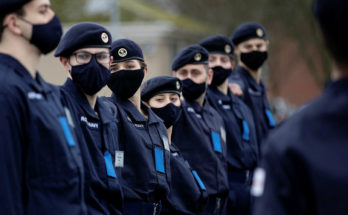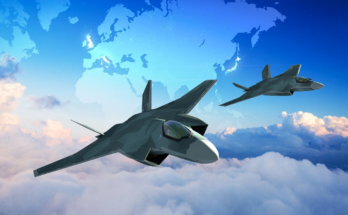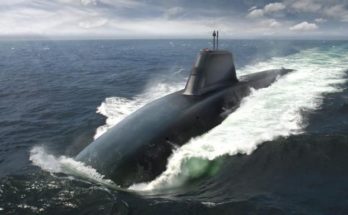
Keynote: Vice Adm. Imayoshi Shinichi, Director General Naval, ATLA
Vice Adm. Imayoshi Shinichi, Director General of Naval Systems at the Japanese Ministry of Defense’s Acquisition, Technology and Logistics Agency (ATLA), spoke at DSEI on Thursday on Japan’s ongoing defense developments. Japan has begun to greatly expand its defense capabilities in past years, observing an increasingly tense East Asian political climate. In direct proximity to China, Russia and North Korea, Japan cannot afford to take security lightly. As Prime Minister Fumio Kishida said earlier this year, “Ukraine may be the East Asia of tomorrow.”
In response to rising tensions in the East Asian theater, Japan has sought to modernize its defense doctrines and policies. Vice Adm. Imayoshi outlined the Japanese Ministry of Defense’s seven pillars elaborated in the new National Defense Strategy (NDS), one of three revised defense documents published in December 2022. The pillars consist of standoff defense; integrated air and missile defense; unmanned defense capabilities; cross-domain operation; command, control and intelligence functions; mobile deployment; and civilian protection, sustainability and resiliency. The breadth of focus shows Tokyo’s commitment to not only keeping up with other regional defense actors but setting the pace.
A key part of the new structure of Japanese security is the acquisition of cutting-edge technology that will allow Tokyo to carry out its vision. Vice Adm. Imayoshi emphasized the need for good relations with industry partners as Japan seeks new and innovative weapons and systems. In pursuit of this goal, the Ministry of Defense has plans to establish a new research institution that can partner with the private sector to design and develop new defensive solutions to emerging challenges. Acquiring technology such as artificial intelligence (AI) and drones was mentioned as a priority. Such acquisitions must happen at an early stage, according to the vice admiral, or Japan risks playing catch up to rivals. The vice admiral made it clear that “defense production is an integral part of defense capability itself.”
The importance of international collaboration was another element of the vice admiral’s speech, perhaps a lesson learned from Ukraine. He underscored the value of shared security arrangements and sharing knowledge on new technologies. Interchangeability with allies and partners was also mentioned as a focus, along with facilitating equipment transfers at a global level.
If sustained, Japan’s military modernization will transform its role in East Asia and the global security architecture. While questions remain about the long-term political will to militarize, the public and governmental perception of re-armament has clearly undergone a massive shift in recent years. This shift has been accompanied by a sizable commitment to enhance Japanese security capabilities. As tensions rise and arms buildups continue in the Indo-Pacific region, Japan will be an increasingly key player to watch in the future of East Asian security and defense.
Tom Freebairn is a weapons analyst with Military Periscope covering naval affairs and maritime systems. He pursued an undergraduate degree in International Relations and Modern History, followed by a master's in Middle East, Caucasus, and Central Asia Security Studies from the University of St. Andrews. His master's thesis focused on the relationship between oil and separatist politics in Northern Iraq. Tom's interests include the politics of energy, ethnic separatism, the evolution of naval warfare, and classical history.




